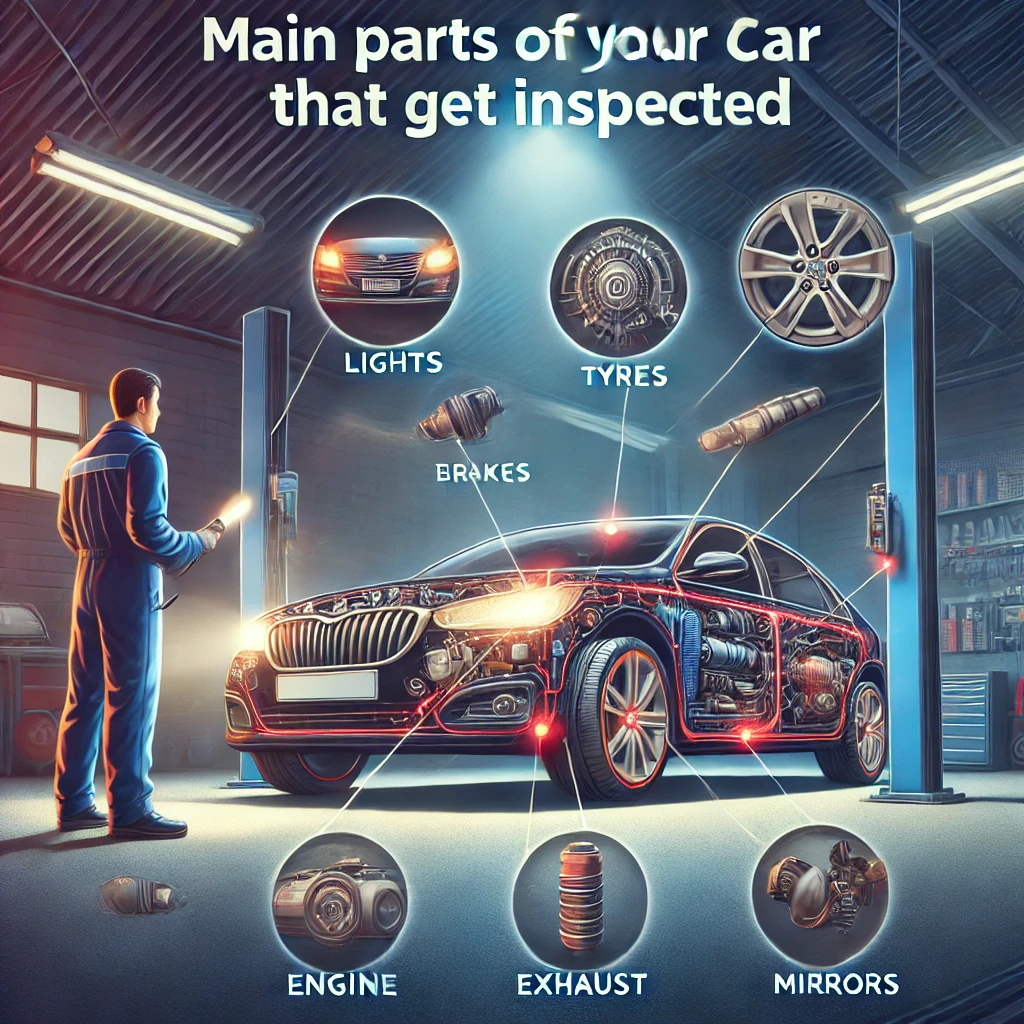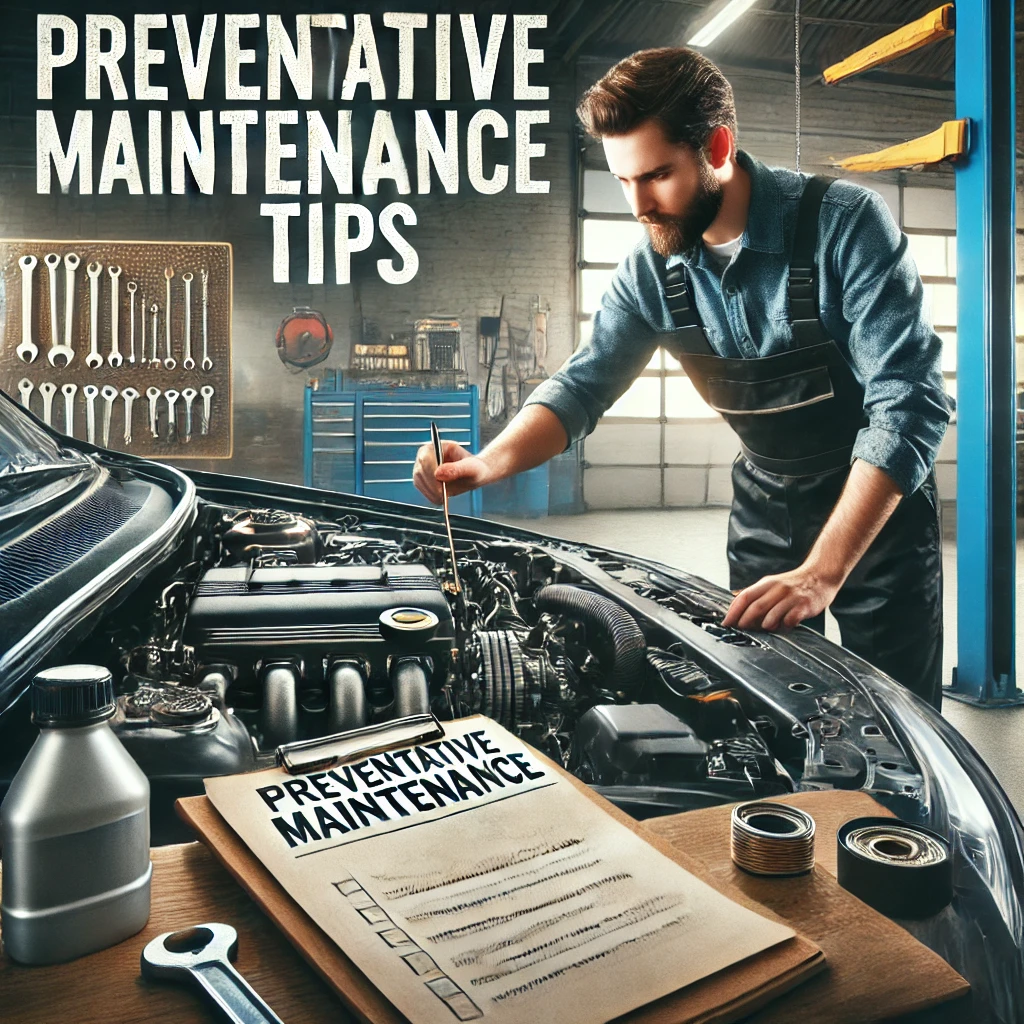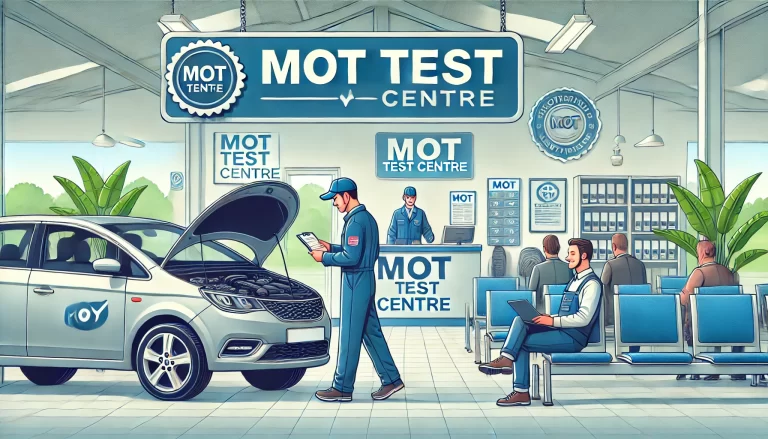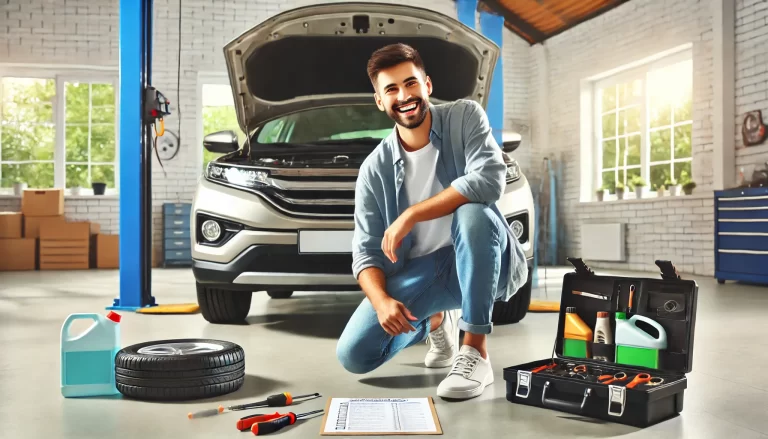How to Read and Understand MOT Test Results
Understanding your MOT test results is important to keep your car safe and roadworthy. The MOT test is a yearly checkup required for cars over three years old in the UK. It checks that your car is safe, roadworthy, and not too polluting. This guide will help you read and understand your MOT test results, so you know what they mean and what to do if your car doesn’t pass.
What is the MOT Test | Main Parts of your car that get Inspected
Before learning how to read the results, it’s good to know what the MOT test checks. Here are the main parts of your car that get inspected:

Vehicle Identification Number (VIN): This is a unique number for your car. It must be present and readable.
Registration Plate: The plate should be in good condition and easy to read.
Lights: All lights, like headlights, indicators, and brake lights, need to work properly.
Steering and Suspension: The steering wheel and system, as well as the suspension, must be in good condition.
Wipers and Washers: These should work well to keep your windscreen clear.
Windscreen: It should be free of damage that blocks your view.
Horn: The horn must work properly.
Seatbelts: All seatbelts need to be in good condition and working.
Seats: The driver’s seat must adjust properly, and all seats must be secure.
Fuel System: There should be no leaks, and the fuel cap must fit well.
Exhaust System: There should be no leaks, and the exhaust must not be too noisy or polluting.
Vehicle Structure: The car’s body should be free of serious rust or damage.
Doors: All doors should open and close properly.
Mirrors: Mirrors must be in good condition and securely attached.
Wheels and Tyres: Tyres must have enough tread depth and be in good condition. Wheels should not be damaged.
Brakes: The braking system should work efficiently.
Reading Your MOT Test Certificate
After your car is tested, you get an MOT test certificate. This certificate is an official record showing that your car meets the minimum safety and environmental standards. Here’s what you’ll find on the certificate:
- Test Number: A unique number for your test.
- Vehicle Details: Information like make, model, and VIN.
- Test Date and Expiry Date: The date of the test and when your next test is due.
- MOT Test Results: A summary of the results, including any problems found.
Learn How to Choose the Best MOT Test Centre Near You.
Categories of MOT Test Results
Your MOT test results can fall into three categories:
- Pass: Your car meets the legal standards. You might still get advisories (warnings).
- Advisories: These are warnings about issues that could become problems later. It’s a good idea to fix these soon.
- Failures: Your car has serious problems that need fixing before it can pass the MOT test.
Understanding MOT Test Results
Here’s how to understand the different parts of your MOT test results:
- Pass with No Advisories
If your car passes with no advisories, it means everything is in good condition. However, this doesn’t mean your car is perfect. Regular maintenance is still important.
- Pass with Advisories
Advisories are warnings about parts that are close to failing. It’s important to fix these issues soon. Common advisories include:
- Tyres Close to Legal Limit: Your tyres are wearing out and need replacing soon.
- Brake Pads Wearing Thin: Your brake pads are getting worn and should be replaced to ensure safe braking.
- Minor Oil Leaks: Small oil leaks that aren’t serious now but should be monitored and fixed.
- Failures
If your car fails the MOT test, it has serious problems that need fixing. The test report will tell you exactly what needs repair. Common reasons for failure include:
- Brake Issues: Problems with the brake system, like worn pads or malfunctioning brake lights.
- Tyre Problems: Tyres that are too worn or damaged.
- Lighting Issues: Lights that don’t work or are incorrectly aligned.
- Suspension Problems: Issues with shock absorbers or springs.
- Excessive Emissions: Emissions that are too high, often due to engine or exhaust problems.
Learn How to Save Money on Your Next MOT Test.
Detailed Breakdown of Common MOT Failures
Understanding common MOT failures helps you prepare better and maintain your car:

Brakes
- Brake Pads and Discs: Worn pads or discs can affect braking. Look for squeaking noises or reduced braking power.
- Brake Lights: Check all lights regularly to make sure they work.
Tyres
- Tread Depth: Tyres must have at least 1.6mm of tread. Use a tread depth gauge to check.
- Tyre Condition: Look for cuts, bulges, or damage.
Lighting and Signalling Equipment
- Headlights and Indicators: Ensure all lights work and are aligned correctly.
- Number Plate Lights: These lights must work for visibility at night.
Suspension
- Shock Absorbers: Worn or leaking shock absorbers can make the car bouncy. Check for uneven tyre wear.
- Springs: Look for broken or worn springs.
Exhaust and Emissions
- Excessive Emissions: High emissions can indicate engine or exhaust issues. Regular servicing can help.
- Exhaust Leaks: Check for leaks or corrosion.
Vehicle Structure
- Corrosion: Rust can affect the car’s safety. Inspect and treat rust spots.
- Body Damage: Any damage affecting safety must be repaired.
What to Do If Your Vehicle Fails the MOT Test
If your car fails the MOT test, here’s what to do:
- Review the Failure Report
Read the report to understand what needs fixing.
- Get Quotes for Repairs
Contact several garages to get repair quotes.
- Make the Repairs
Choose a garage and have the repairs done. Use quality parts and follow guidelines.
- Retest Your Vehicle
Book a retest at the same or another approved center. You may get a partial retest fee if you return within 10 working days.
- Keep Records
Keep records of repairs and retests. This helps for future reference and when selling the car.
Preventative Maintenance Tips
Regular maintenance helps avoid MOT failures. Here are some tips:

- Regular Servicing
Follow the manufacturer’s service schedule.
- Monthly Checks
Check lights, tyres, wipers, and fluid levels monthly.
- Use Quality Parts
Use high-quality parts for replacements.
- Drive Smoothly
Avoid harsh braking and rapid acceleration.
- Stay Informed
Keep up to date with MOT regulations and maintenance tips.
Conclusion
Reading and understanding your MOT test results is key to keeping your car safe and roadworthy. By knowing what the results mean and taking action on any issues, you can ensure your car stays in good condition. Regular maintenance and prompt repairs will help you pass your MOT test and keep your vehicle running smoothly.





